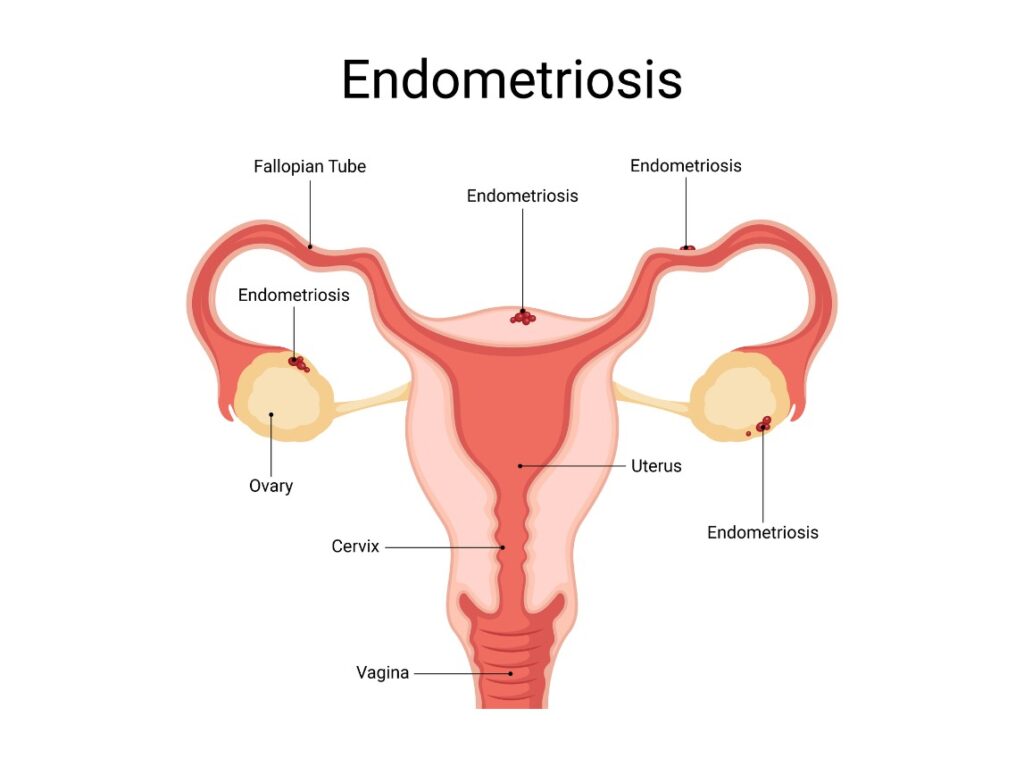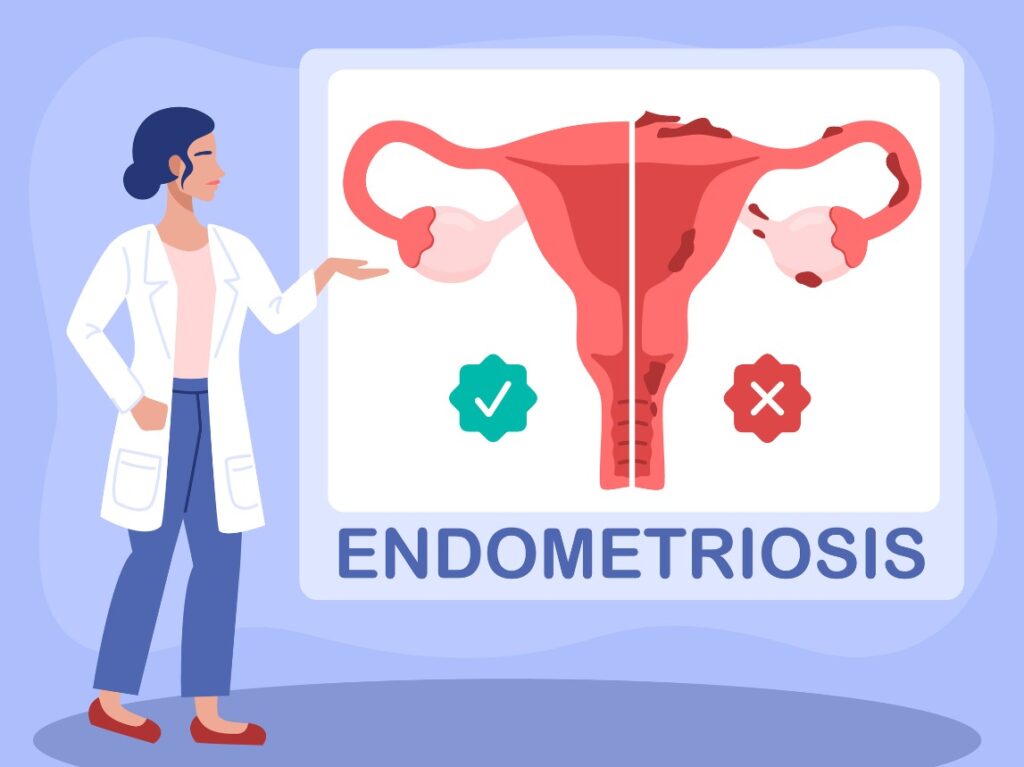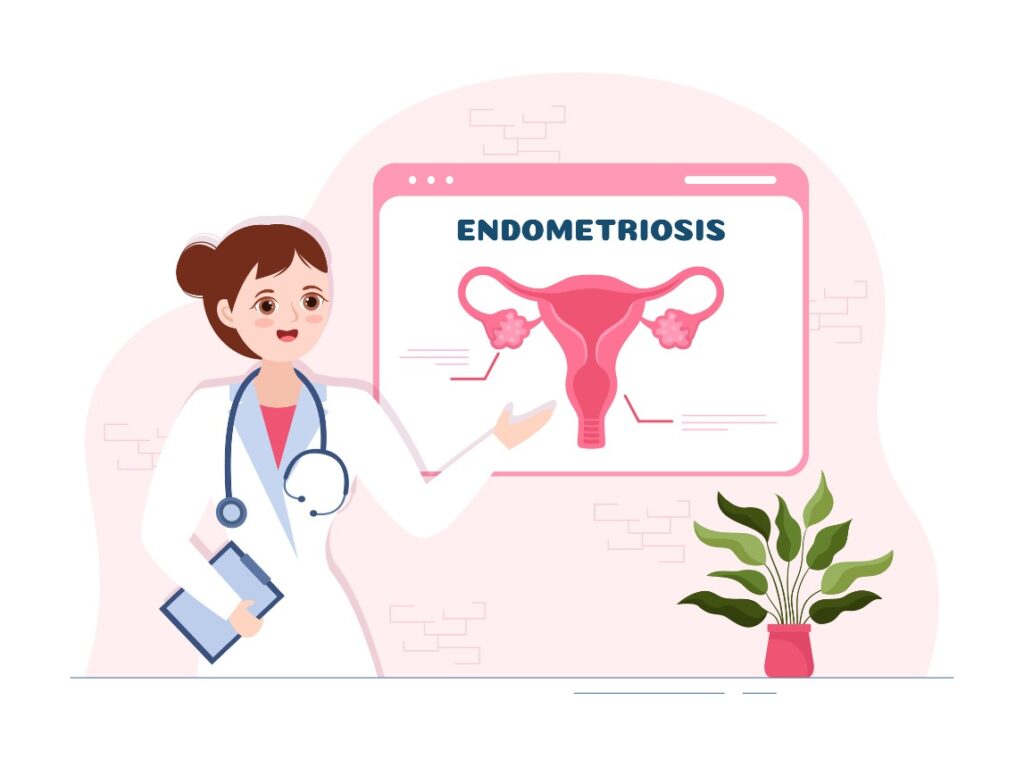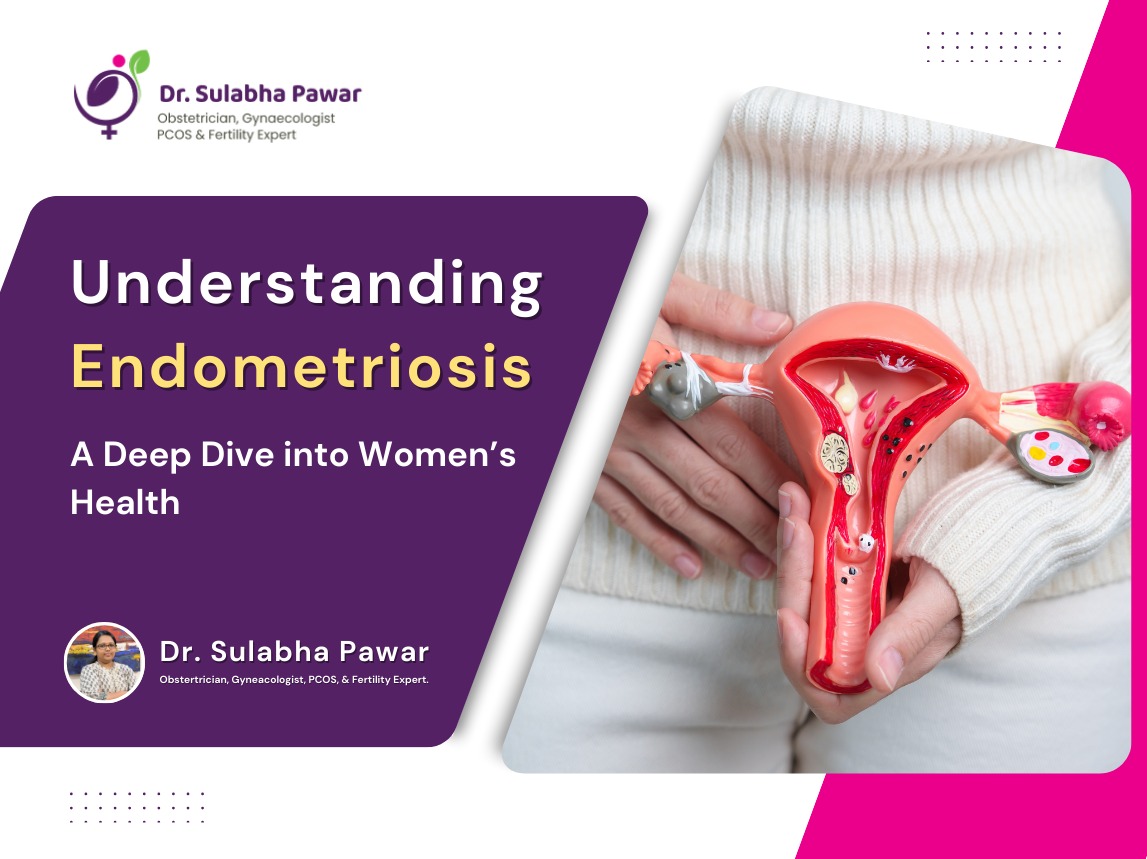A Deep Dive into Women’s Health
Endometriosis is a condition that affects millions of women worldwide, yet it remains somewhat misunderstood and often goes undiagnosed for years. This condition can significantly impact a woman’s quality of life, causing everything from pain and discomfort to fertility challenges. Let’s take a closer look at what endometriosis is, its symptoms, and the ways it can be managed.
What is Endometriosis?
Endometriosis occurs when the tissue that normally lines the inside of the uterus (called the endometrium) starts to grow outside of the uterus. This tissue can be found on the ovaries, fallopian tubes, or other organs within the pelvis. The problem arises because, while this tissue behaves the same way as it does inside the uterus—thickening, breaking down, and bleeding with each menstrual cycle—it has nowhere to go when it’s outside the uterus.
This results in inflammation, scar tissue formation, and sometimes cysts. Over time, it can cause chronic pain and, in some cases, fertility problems.

Common Symptoms of Endometriosis
The symptoms of endometriosis vary from woman to woman, but some common signs include:
- Pelvic Pain: The most common symptom, often experienced during menstrual periods, but it can also occur between periods or during sexual activity.
- Heavy Periods: Many women with endometriosis report experiencing unusually heavy menstrual bleeding.
- Fatigue: Living with chronic pain and discomfort can lead to exhaustion and fatigue.
- Digestive Issues: Some women experience bloating, diarrhea, or constipation, especially during their periods.
- Fertility Problems: Endometriosis is sometimes diagnosed when women seek help for infertility, as it can make it more difficult to conceive.
Why Does Endometriosis Occur?
The exact cause of endometriosis is still unknown. However, several theories have been proposed. Some experts believe it’s due to retrograde menstruation, where menstrual blood flows backward through the fallopian tubes into the pelvic cavity. Others think it could be related to immune system disorders or genetics. There’s also the possibility that certain cells in the pelvic cavity can turn into endometrial-like cells due to hormone or immune system factors.

How is Endometriosis Diagnosed?
Endometriosis can be challenging to diagnose because its symptoms can mimic those of other conditions like pelvic inflammatory disease or irritable bowel syndrome. A combination of a detailed medical history, physical exams, and imaging tests such as ultrasound or MRI can help doctors assess the likelihood of endometriosis. However, the only definitive way to diagnose endometriosis is through a surgical procedure called laparoscopy, where a doctor can look inside the abdomen for signs of endometrial tissue outside the uterus.
Treatment Options for Endometriosis
While there is no cure for endometriosis, several treatment options are available to manage symptoms and improve quality of life. These include:
- Pain Relief: Over-the-counter painkillers like ibuprofen can help with mild pain. In more severe cases, prescription medications might be necessary.
- Hormonal Therapy: Birth control pills, hormonal IUDs, and other hormone-based treatments can help reduce or stop the menstrual cycle, which may alleviate some of the symptoms of endometriosis.
- Surgery: In cases where medication is ineffective, surgery might be recommended to remove endometrial tissue. This is often done through laparoscopy. For women experiencing infertility due to endometriosis, surgery may improve their chances of conceiving.
- Lifestyle Changes: Some women find relief through dietary changes, regular exercise, and stress management techniques like yoga or meditation.

Living with Endometriosis
Living with endometriosis can be physically and emotionally challenging. It can affect relationships, work, and day-to-day activities. However, with the right treatment and support, many women are able to manage their symptoms effectively. It’s important for women to listen to their bodies, seek medical advice if they experience symptoms, and advocate for themselves if they feel their concerns aren’t being taken seriously.
The Road Ahead
While endometriosis may not have a cure, awareness is growing, and research continues to advance. There is hope that more effective treatments—and perhaps a cure—will be found in the future. For now, understanding the condition and exploring treatment options is the best way for women to take control of their health and well-being.
If you or someone you know is experiencing symptoms of endometriosis, don’t hesitate to reach out to a healthcare provider. Early diagnosis and treatment can make a significant difference in managing this condition.




